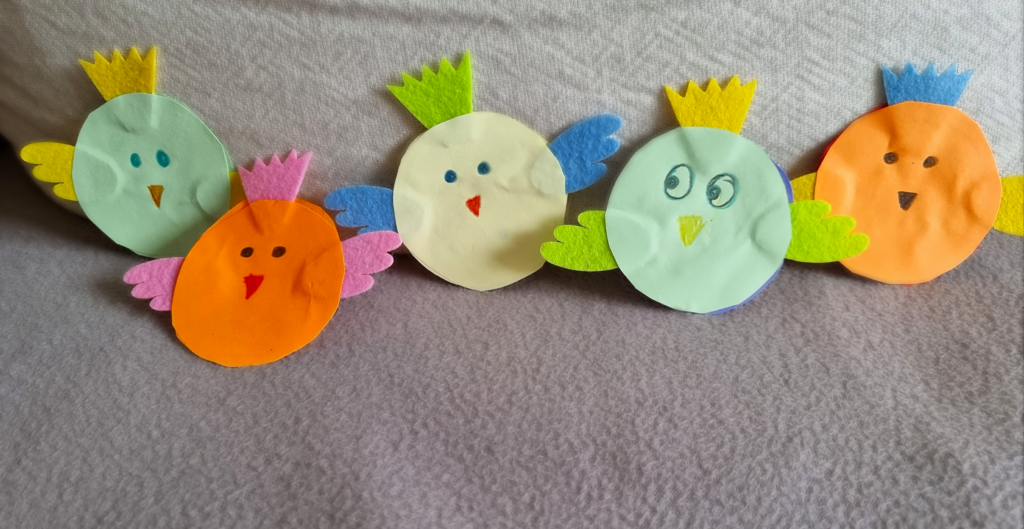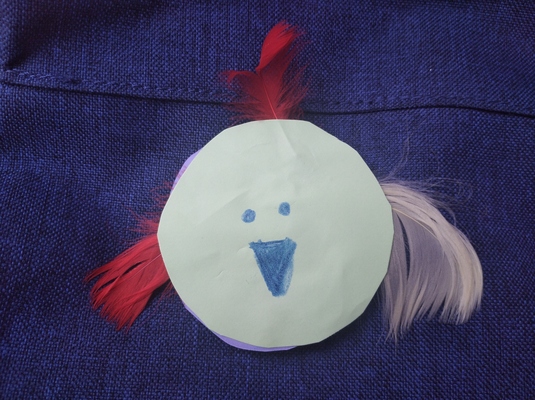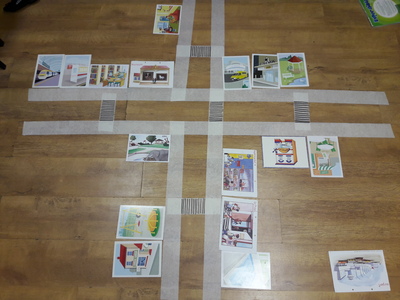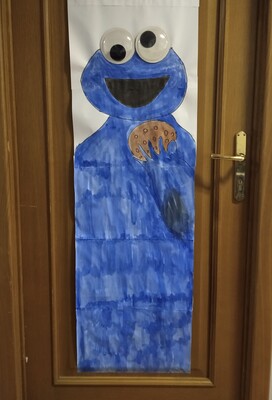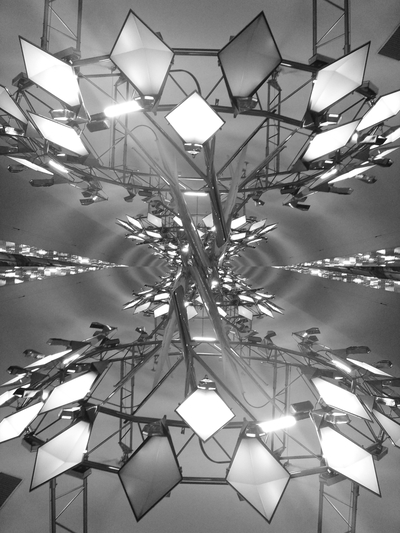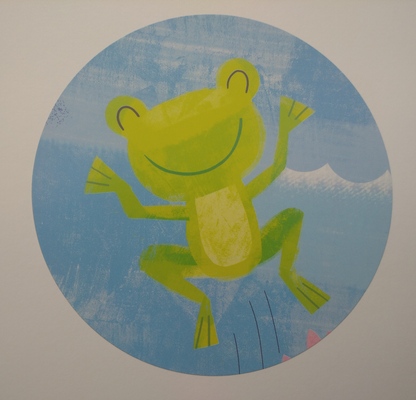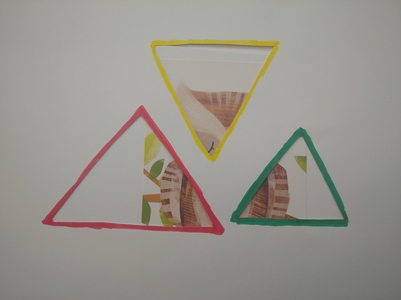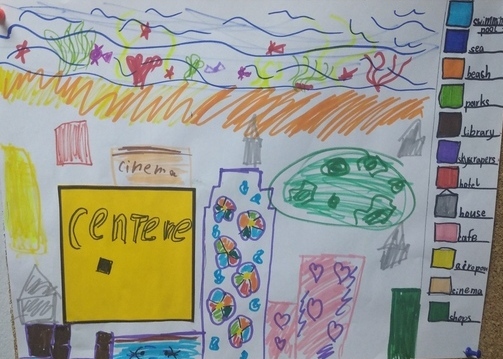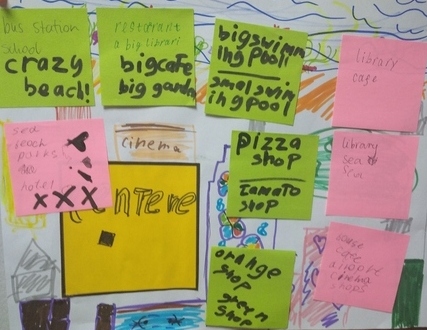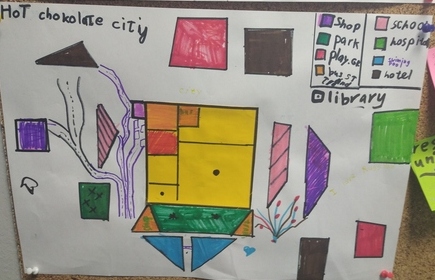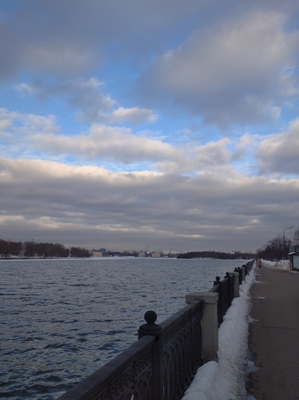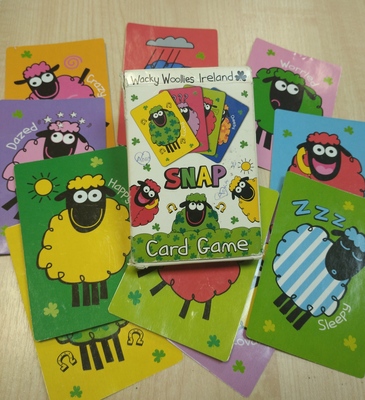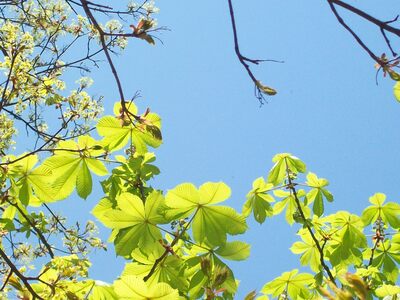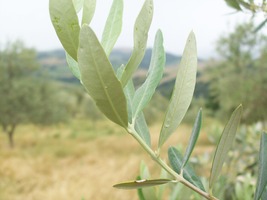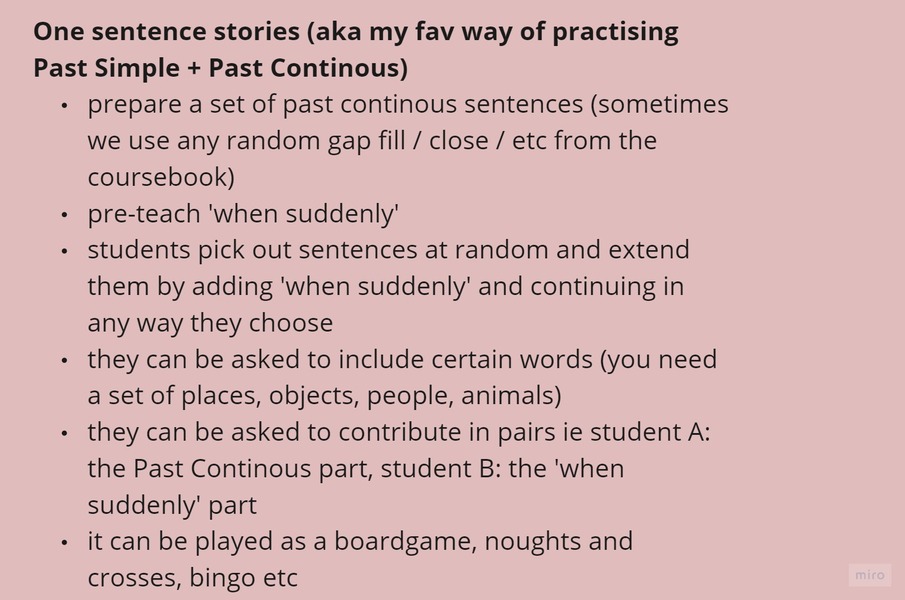Masking tape aka Painter’s tape
The funny thing is that I cannot remember when I discovered that the painter’s tape existed. Maybe it was Vita, my friend and my colleague who first brought it to school…
What I know is that for the past four years I have always had a roll of two at home and a roll or two at school. Because, right now, there is no classroom without the painter’s tape.
Every single time we do anything in the hallway, any kind of a treasure hunt, any jigsaw puzzle, anything which involves things being put up on the walls, the painters’ tape enters the picture. I prefer it to blutack because I don’t mind just throwing it out (instead of peeling it off carefully from every single scrap of paper) and, even more importantly, my students don’t feel tempted to nick the tiny little bits of the precious resource.
My primary students who are learning to read and write know this resource very very well. We use the tape to write instructions for different activities, especially if they needed to be displayed around the school and all our lessons would start with a fun activity with the little chairs – some of them would have the bits of the tape with funny words on them, for example choosing the place to sit (‘I am sitting on the Happy Octopus’), making sentences with the key word written on the chair (‘dancing’ – ‘Today I am a dancing hippo’) or even writing and creating random combinations of words.
Apart from that, pieces of the tape can be left on each table, one per student. They can be used in any kind of surveys (‘Which game would you like to play?’, ‘What was the most difficult part of the lesson?’) but I also noticed that the students liked to write on them, just to express themselves, to scribble while they were listening or to just to somehow personalise the table where they were sitting.
The tape can also be used to help group and pair the students. There should be a piece of tape on every desk and on these the teacher write the names of different superheroes (a very broad term in my lessons, it can include both Batman and Cheburashka, Harry Potter and Aleksander Sergeevich Pushkin, Lionel Messi and Santa). On entering the classroom at the beginning of the lesson, the students pick out one of the cards with the same name from the teacher and this is how they find out where they are sitting on the day. The same cards can be used later on to mix the students, with the teacher (or one of the students) picking out two cards to decide that in the following activity Superman will be working with Harry Potter and Robinson Cruzoe with Superman etc.
AND, though there are no photos, the painter’s tape was THE LINE on the carpet that helped my little babies sit in a safe and appropriate distance from the big TV on the floor.
Last but not least, we have used it to create a city plan on the floor which we later filled in with flashcards and we used to move around. It is a rather limited use, but, oh what an amazing lesson.
The door
The door is the most underestimated and underloved part of the classroom. And how undeservedly so! Even if you have only the most standard door (not those double door straight from a castle), that is a good two square meters of a notice board, ready to use! It would be recommended to check the material, the surface and the ‘stickability’ and to test different adhesive materials that will not destroy the door itself but there is scotch, there is the painter’s scotch and there is blutack to name at least a few that could be used here.
In my classrooms we have used the door in the following way: putting up the huge posters to use instead of the numbers (The Caterpillar Classroom, The Baby Shark Classroom, The Cookie Monster Classroom), putting up the homework poster (‘Did you do your homework?), putting up the washing line with all the clothes to use during (‘Today I am wearing…’), putting up the classroom rules posters, the library reviews poster (for the kids to leave the reviews after they have read something), the test feedback poster (‘How difficult was the test? 10 – very difficult, 1 – not difficult at all) and any class surveys completed on the way out, the sight words reading practice on the way in, displaying the alphabet poster when we were just starting to read, displaying any of the work that the students produced (when the walls were already taken) and, last but not least, or quite the contrary: the first ever: The Door of Doom aka the poster we created with my FCE students by adding bits and pieces to the poster throughout the course. These bits and pieces were all the things we struggled with: the mean phrasal verbs, the less common suffixes, the collocations that we would always make a mistake with and so on.
Next time you are in the classroom, have a look at the door and at this whole unused space…And what you could do with it. Once you start, you will never stop.
Counting sticks
This entry is perhaps not such a great surprise. After all, all the little people (and their teachers and parents) are very familiar with these colourful plastic sticks. Everything else aside, this should be one reason to be including them in our EFL lessons.
We use them mostly to count, of course, the kids pick two or three or twenty and this helps to make such an abstact idea as numbers a little bit more visual (because three items lying on the table, three sticks, three fingers or three dots on the dice are a better representation of the secret that this symbol ‘3’ stands for) and kinesthetic when we let the kids manipulate the sticks. Luckily, the sticks are cheap and easy to get so having lots and lots of them, enough for everyone, is not a difficult aim to meet.
One of my favourite games to play (perhaps because it is a perfect solution for a lazy teacher) is using these together with the paper plates with numbers. The kids look at the number, count the sticks and add or take them away, in order to make sure that the number matches the number of sticks. Which is also the beginnig of adding and substracting.
By the way, flashcards will do here, too, but the plates have the advantage of having the rim and the sticks do not slide off and you can easily just pile them up on top of each other, put them aside and sort them out after the lesson.
With my ‘adult‘ pre-primary kids, we have used these same counting sticks to help children manage a pair-work activity, to add a visual and kinesthetic element to the verbal exchange. We were practising different varieties of ‘What’s your favourite…’. The kids were sitting in pairs, on the floor, around a set of flashcards that would symbolise the themes (an apple for ‘What’s your favourite fruit?’, a teddy for ‘What’s your favourite toy?’ and so on) and one student in each pair would get a set of five sticks. They were supposed to ask their partner five questions of their choice (we had ten categories) and while doing that, they were supposed to put the stick away, on the relevant card. We used a similiar tool when they were interviewing their partners about things they like (‘Do you like…’ + any words of the kids’ choice) and I guess it can be adopted to pretty much any structure.
Plastic cups
Or any other recycled cups (like those in the photo) which are easily available. They are my favourite resource to sort out materials (pencils, pens, bits and pieces for a craft activity, especially the leftovers, which I hide in the cupboard for later). They also help to organise materials which I give out to the kids, for example we have a set of boxes with crayons organised by the colour, for some, more teacher-centred activities, as here the teacher is the one in charge AND a set of cups organised in sets, one full set per student, which we use in all the SS-centred activities in which the students make decisions which colour to use.
With my older students, I use the plastic cups whenever we use dice in class (and that is OFTEN). The dice given to students (kids and teens) ‘just like that’ have the most amazing ability to fall off the tables about once per minute. Plus they make LOTS and LOTS of noise and if you have a group of then and five dice are rattling and rattling…Well, you can imagine. If you put each dice into a plastic cup, you can still shake it and get a number and everything is more manageable. I think I saw it first in Nataliya T’s class and here are my thankyous for this idea!
Paper plates
Oh the paper plates! They are of course used at parties and in craft lessons to make clocks, spinners, plates for all the ‘fruit salad’ craft activities, snowmen, frogs, chicks, rabbits and what not…But there is so much more!
For me it was this one day when I got an idea for a great lesson for which I really needed the number flashcards. These, however, were left behind in the office, so getting them for the lesson that was the first lesson of the day, early in the morning was out of the question. I rushed to the school cupboard in the house, to go over all the treasures there, with the idea of something that could help me replace the flashcards and there they were – a set of colourful cardboard plates from my local supermarket (which I must have bought for some class party earlier). Creating the flashcards took three minutes and a permanent market and it turned out that these particular plates (many of which I bought later on in the same supermarket) were perfect for it: big, durable, colourful but not too colourful since there was a thick colourful rim but the centre was just white and empty aka perfect for writing!
We normally use the number plates like any other flascards, first and foremost but the different shape adds to the variety and makes the topic of numbers a bit more fun. We also use them together with the counting sticks (see above) or with any other bits. We used the numbers 1 – 12 to create a huge clock on the floor and we played some movement games with it.
The plates became the canvas that helped me create my amazing emotions and adjectives cards (sorry about blowing my own trumpet here but there is a lot of love here) which we have been using for more than two years now.
Not to mention that the plates can be a very useful tool to organise all the bits and pieces while getting ready for a craft activity, hats for the snowman on one plate, scarves for the snowman on another, and they all can be stuck on top of each other. And, as you know, every little helps to make the teacher’s life a bit easier.
What are the unsung heroes of your classroom? Please share!
Happy teaching!
